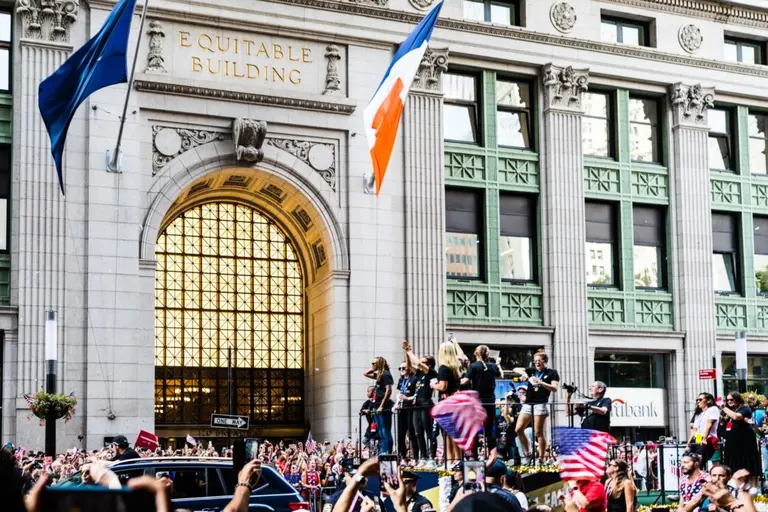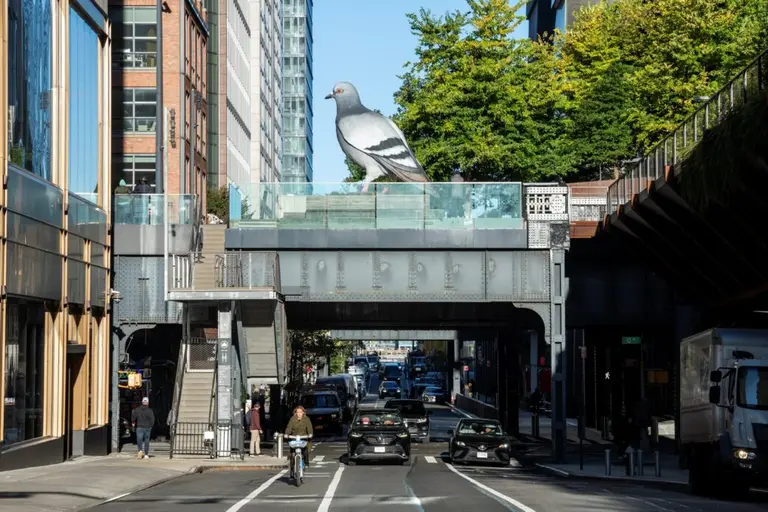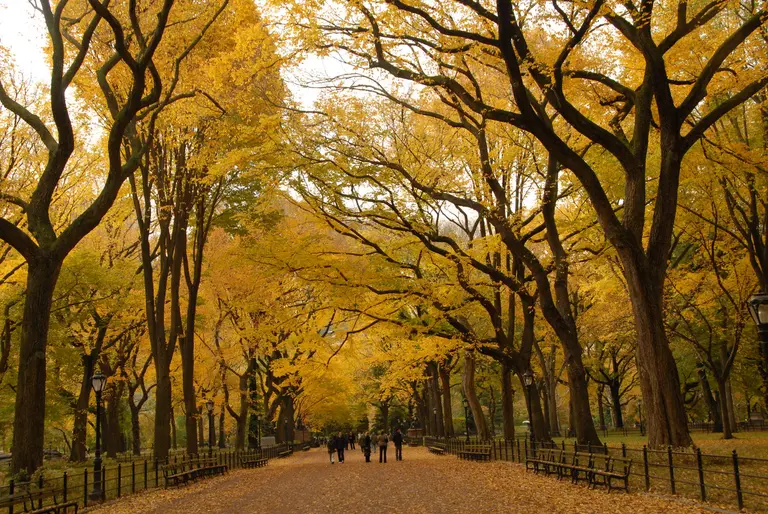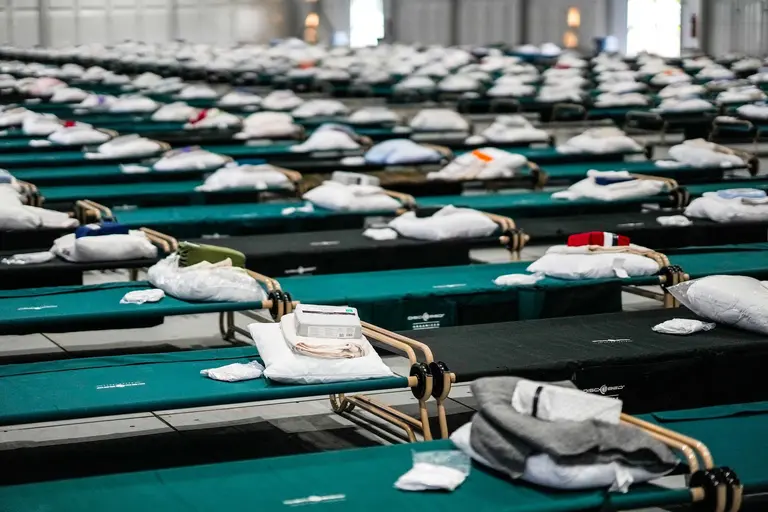‘Open Culture’ program will bring outdoor art and live performances to NYC this spring
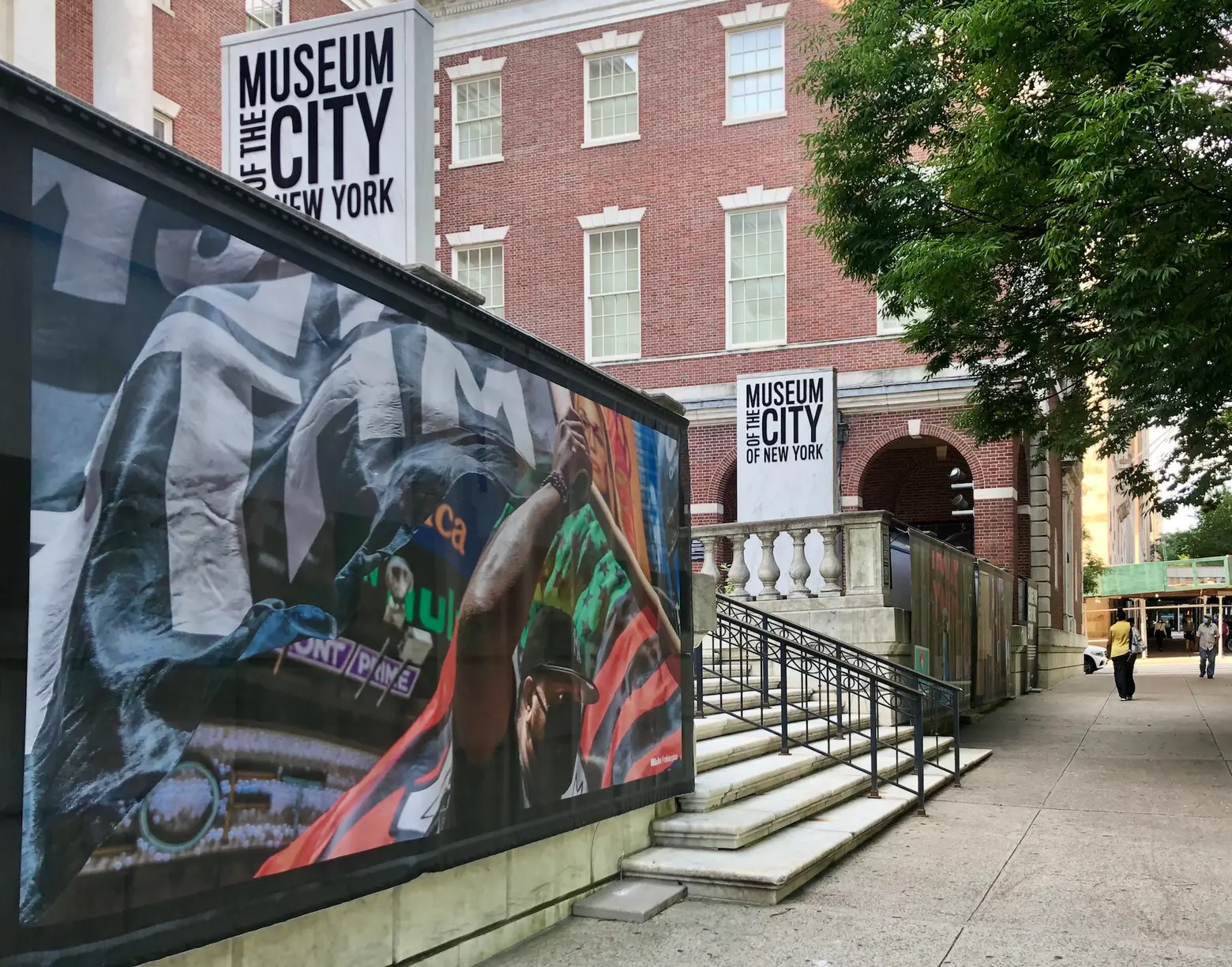
The Museum of the City of New York opened an outdoor photo installation this summer titled “New York Responds,” Photo courtesy of MCNY
The New York City Council on Thursday passed legislation permitting cultural institutions to use public outdoor space for events and performances. Sponsored by Council Member Jimmy Van Bramer, the bill requires the city to create the “Open Culture” program, modeled after the city’s successful outdoor dining initiative, which lets restaurants set up seating on sidewalks and some streets closed to cars. The program is set to be established by March 1, 2021.
Cultural institutions and venues would pay $20 for participation in the program, overseen by the Mayor’s Office of Citywide Event Coordination and Management (CECM), Department of Transportation, Department of Buildings, the NYPD, FDNY, and other agencies directed by the mayor. Under the legislation, DOT would have to provide a list of eligible open spaces by February 1.
“Arts and culture are the lifeblood of our City. With the new Open Culture program, artists and art groups can start staging performances – and charge for them – starting March 1,” Van Bramer said in a statement. “There will be dancing, singing & comedy on the streets bringing joy and jobs to thousands.”
“We need to use our City’s space in new and creative ways to make sure the cultural community can perform and create. This new law will be a dynamic and transformative program for our cultural community and will create a dynamic open space use – a true win-win.”
The Council passed a second bill, Int. No.2034, on Thursday that requires the city to create a website with information about the Open Culture program, as well as a map feature for users to search for outdoor cultural programs.
“Prior to COVID-19, the cultural sector in NYC was one of the largest industries in NYC, employing nearly 400,000 workers, paying them $31 billion in wages, and generating $110 billion in economic activity,” Council Member Laurie Cumbo, who sponsored Int. No. 2034, said. “In merely seven months, employment within this sector has fallen over 60%, with 95% of organizations being forced to cancel some programming. The passage of Intro 2034 is symbolic of our city’s commitment to innovation in the face of a ‘new normal.'”
The arts and cultural sector has been hit especially hard by the pandemic in New York and around the world. While some museums and cultural institutions were able to open at a limited capacity, most have had to make major layoffs and budget cuts to stay afloat. According to the American Museum Alliance, 30 percent of museums in the United States remain closed because of COVID-19 and nearly one-third of museum directors surveyed by the group said there was a “significant risk” of closing permanently by next fall.
All ticketed, live entertainment events and performances in the city have been on hold since mid-March when Gov. Andrew Cuomo issued his statewide pause order to control the spread of the coronavirus. According to the State Liquor Authority, “advertised and/or ticketed shows” are not allowed, but “incidental” music is permitted. “All other forms of live entertainment, such as exotic dancing, comedy shows, karaoke etc., are not permissible currently regardless of phase,” guidance from the SLA reads.
Some New York City venues continue to put on shows despite the state’s order, claiming the music is incidental. As the New York Times reported, music performances have been held at Marie’s Crisis Cafe, Birdland, and the Blue Note. “We think it’s incidental,” Ryan Paternite, the director of programming and media at Birdland, told the newspaper, referring to the jazz club’s performances. “It’s background music. That’s the rule.”
RELATED:
